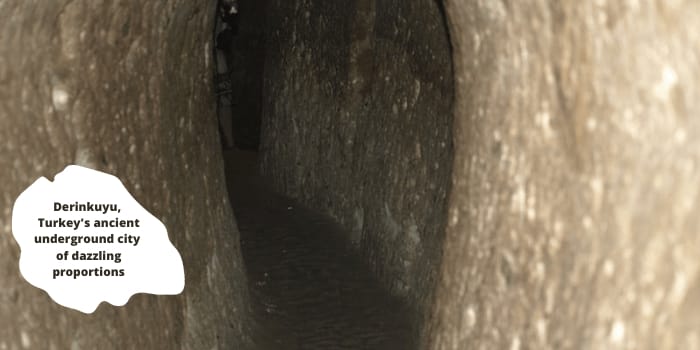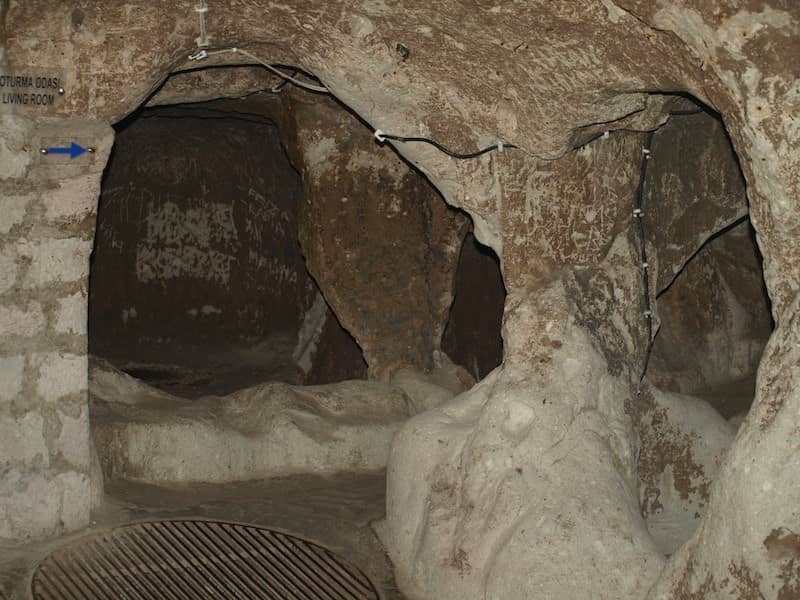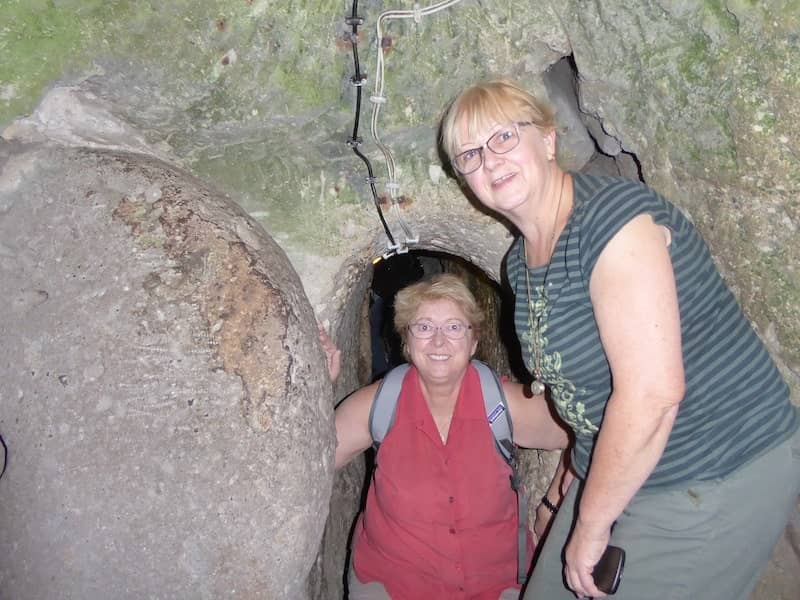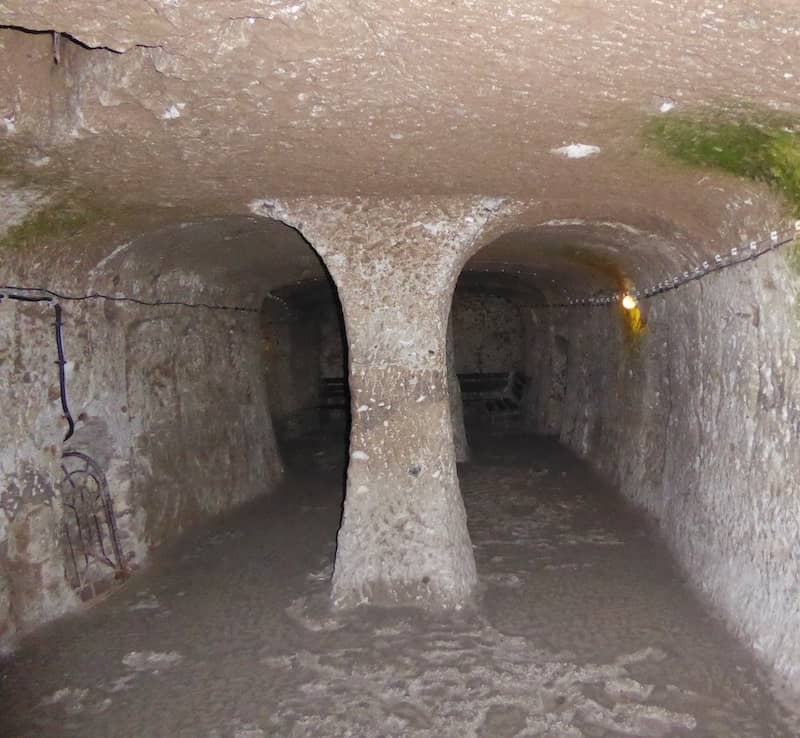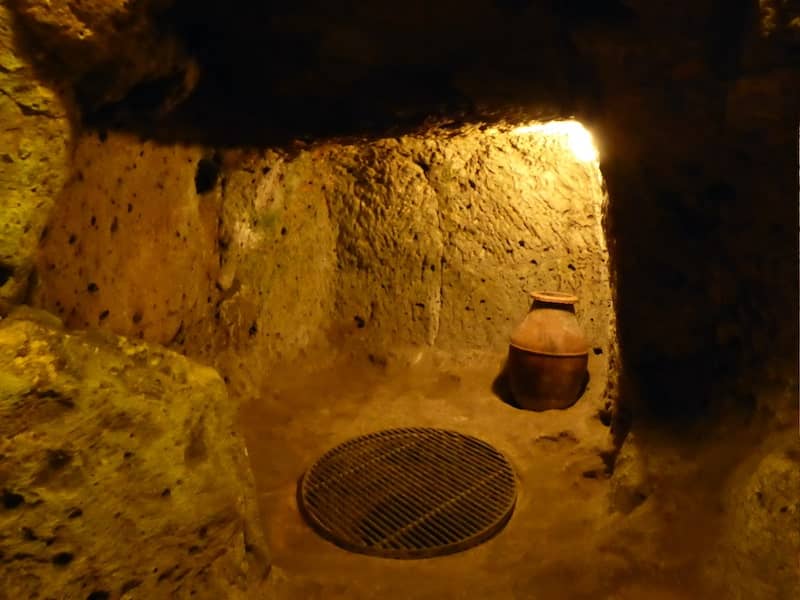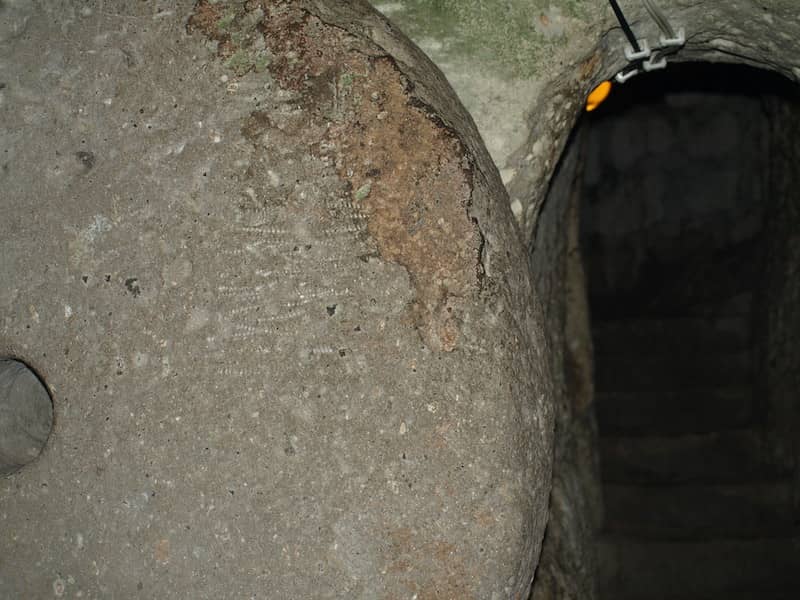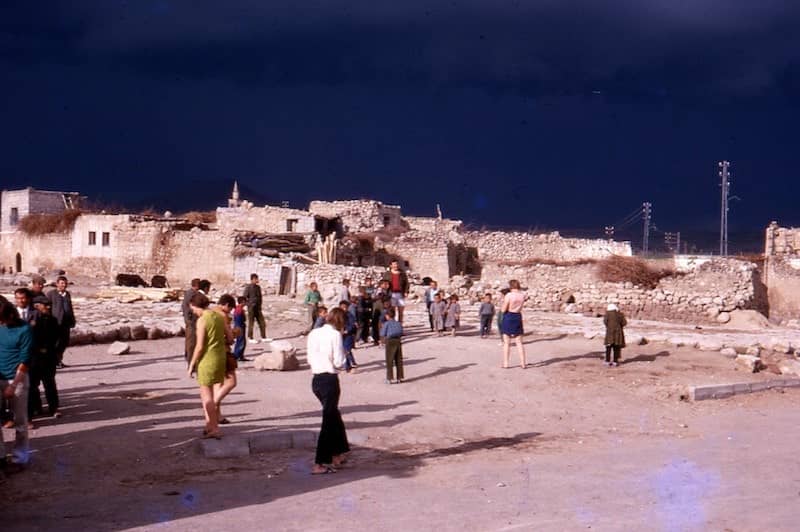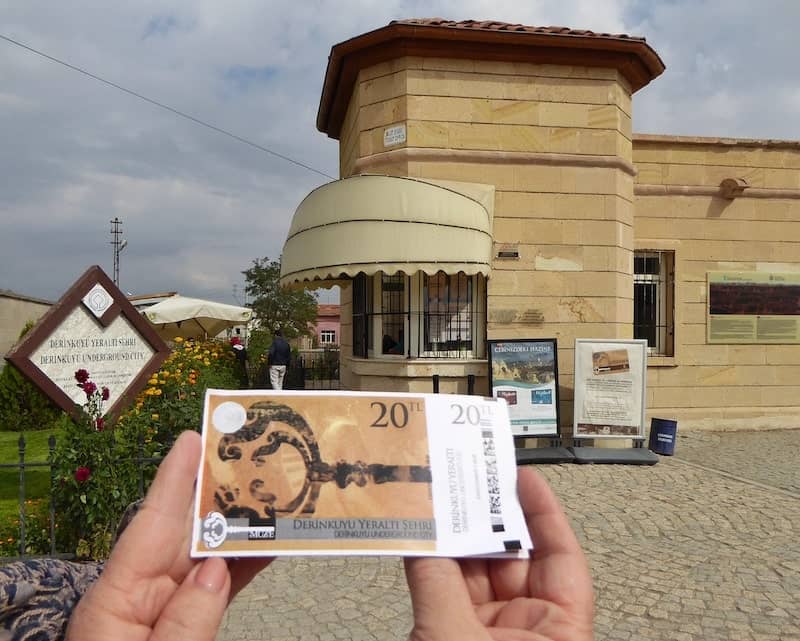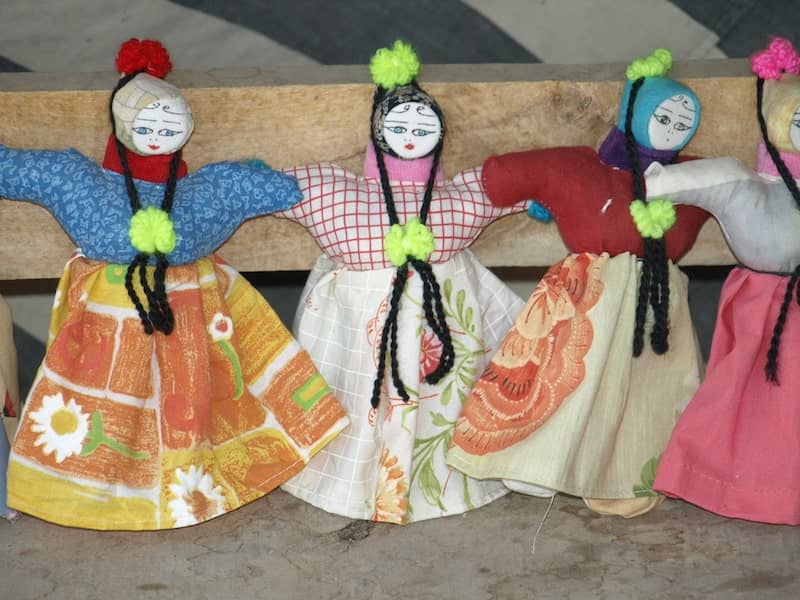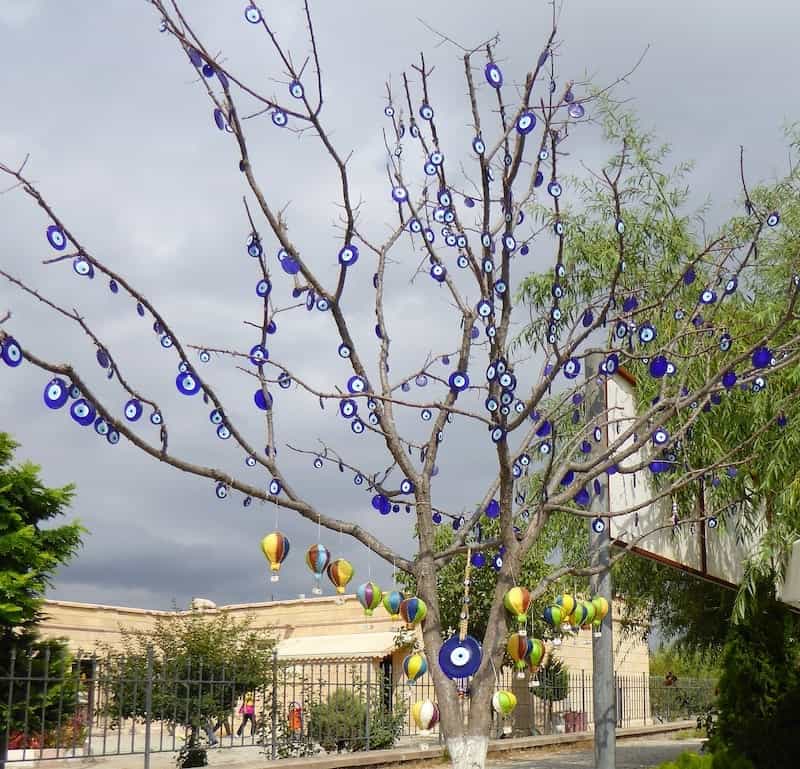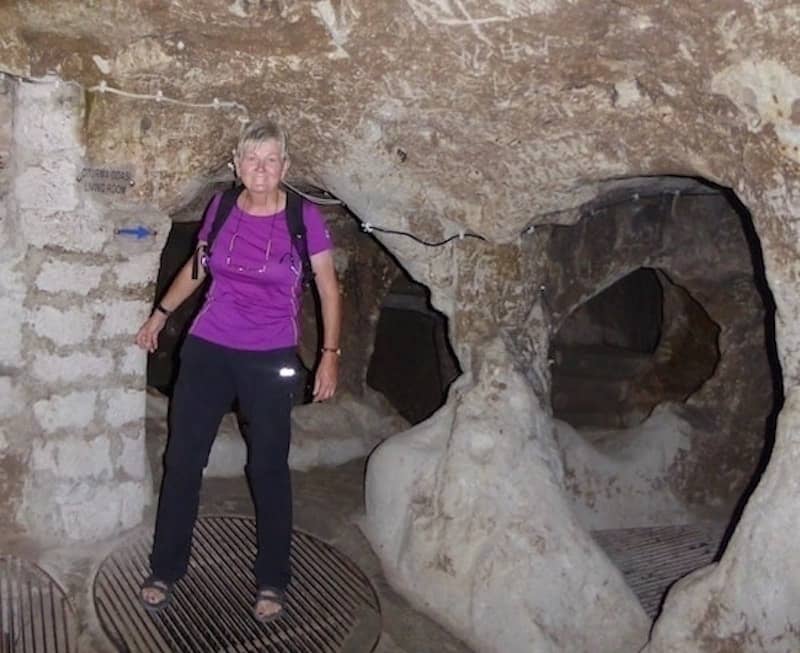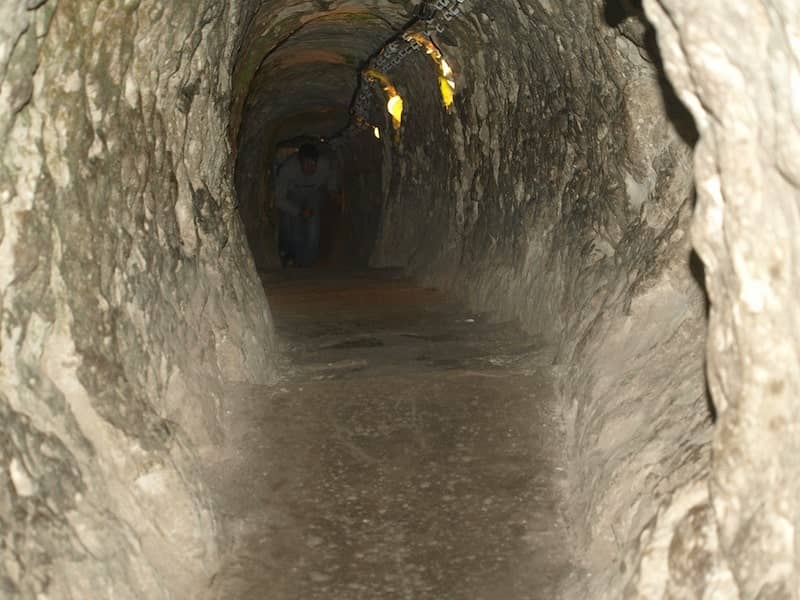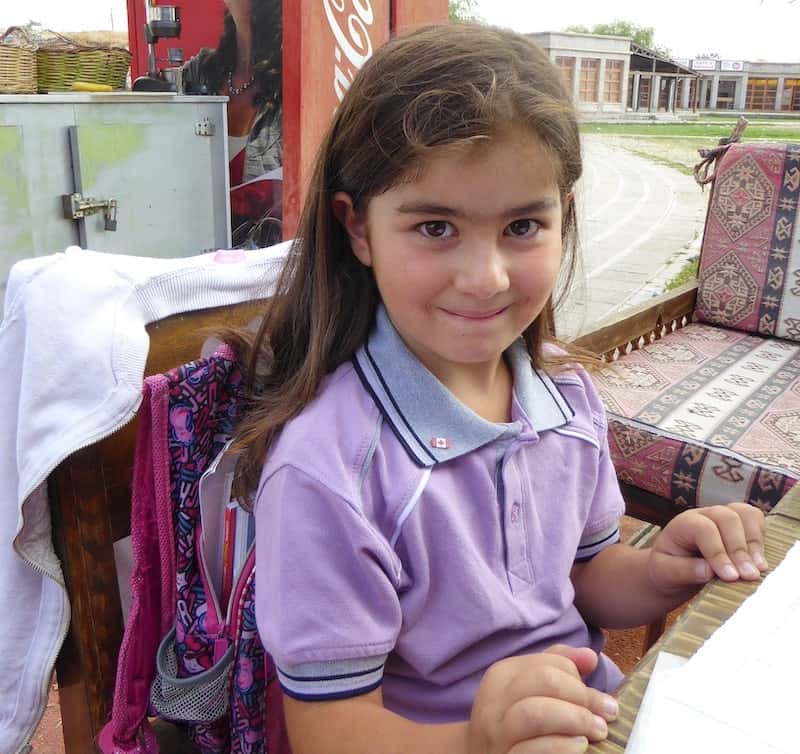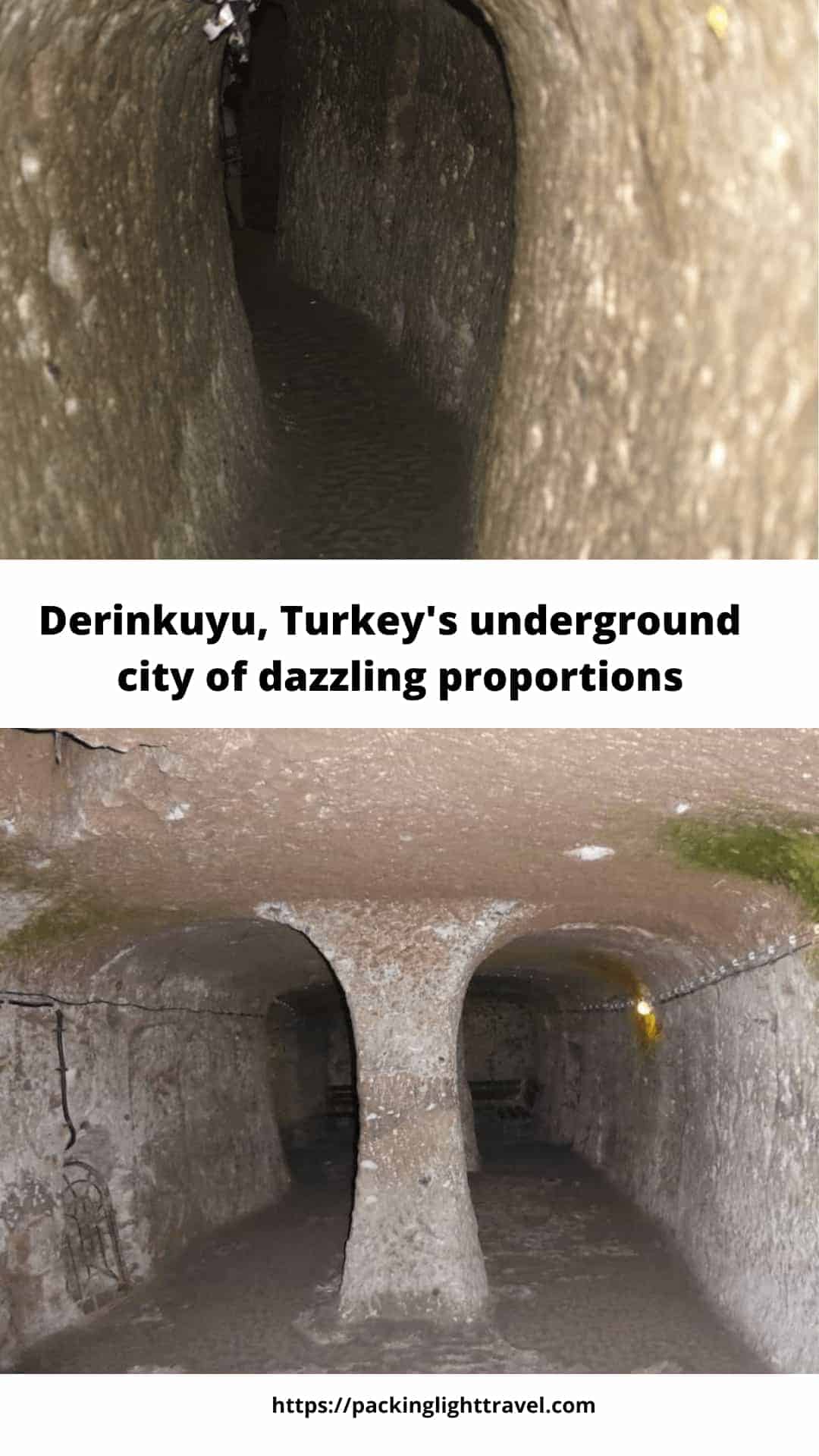A hot-air balloon ride over Cappadocia’s fairy chimney landscape is a major attraction for most visitors to central Türkiye. Those who stay longer quickly discover that the region boasts a fascinating history. Not to be missed are the magnificent underground cities stretching several levels deep and home to thousands of people for extended periods. Derinkuyu ancient underground city is a stunning example of the ingenuity and resilience of many of the land’s ancient civilizations.
Table of Contents
Cappadocia: more than hot-air ballooning
From past civilizations that built magnificent subterranean settlements to Seljuk and Ottoman caravanserais providing respite and protection for travellers along the Silk Road, Cappadocia demands several days of exploration.
For those short on time, a hot-air balloon ride offers a bird’s-eye view of Cappadocia’s unique landscape. However, guided tours or a self-guided road trip presents opportunities to delve into the intriguing history forged by ancient civilizations and foresighted rulers. Visit underground cities such as Kaymaklı and Derinkuyu. Check out open-air museums, cave churches, the rock-cut castle at Uçhisar, a well-preserved Seljuk caravanserai at Ağzıkarahan, and the verdant Ihlara Valley. Wander around captivating towns such as Ürgüp, Mustafapaşa, Ortahisar, and Gulşehir. You won’t be disappointed.
Cappadocia’s underground cities
Cappadocia is renowned for its deep and warren-like underground cities. It’s estimated that there may be as many as 200. They became possible after ancient volcanic eruptions created layer upon layer of ash. These layers eventually hardened into a stable rock that was soft enough to be carved into dwellings offering shelter from the harsh climatic conditions and protection during periods of conflict.
Derinkuyu ancient underground city
We chose to visit Derinkuyu, meaning ‘deep well,’ Cappadocia’s (and Türkiye’s) deepest underground city at a depth of 85 metres / 279 feet. It was rediscovered in 1963 when a man knocked down a basement wall during renovations. He unearthed a room with passageways leading to a subterranean city that could house as many as 20,000 people during times of danger.
I was with four other women. One was certain the claustrophobia-inducing conditions would prove to be too much and elected to wait in a nearby teahouse. Another gave it her best shot but lasted about ten metres before retracing her steps. The three remaining members pressed on.
We’re pleased we did.
1. It’s at the crossroads of civilization
It’s not clear who first built the underground cities. Some predictions are that Derinkuyu was started in the 8th or 7th century BC. It’s generally agreed that they were used mainly by Christians during the long period of persecution, earlier by the Romans and later during Arab raids. In more recent times, Cappadocian Greeks sought refuge in the early twentieth century until the 1923 population exchange between Greece and Turkey.
During less turbulent times, the constant temperatures averaging 13°C / 55°F made them useful as cold storage facilities, wineries, and underground barns.
2. Ancient methods of construction were used
Undoubtedly, caves existed before excavation began. Much about the methods of construction are unknown, including debris removal and disposal techniques. The most logical conclusion is that firstly, ventilation shafts of 85 metres in depth were dug down to the underground water supply. Then, chambers and tunnels were excavated outwards from the shafts, and the debris was taken out through the shafts using pulleys. It was likely dumped in riverbeds where it washed away. The above-ground land is somewhat fertile, and what should have amounted to mountainous amounts of rubble don’t exist.
3. It housed a massive underground community
Derinkuyu housed a school and a church. There were areas for food and water storage, a wine press and cellar, oil presses, communal kitchens, living quarters, weapons arsenals, and niches for oil lamps. Special ovens called ‘tandir’ were found in many of the kitchens. Large earthenware jars were used for storing barley, wheat, corn, vegetables, beer, and wine.
Makeshift crypts were built for the dead until it was safe to leave the city to bury them. The walls of stables were hollowed out for fodder. A unique feature of Derinkuyu is a spacious room on the second floor with a barrel-vaulted ceiling. It’s thought that the room was used as a religious school with smaller study rooms radiating from it.
4. Ancient strategies for protection from invaders
A tunnel on the third floor is believed to lead to neighbouring Kaymakli underground city, 9 km / 5.6 mi to the north. It’s no longer functional as parts of the tunnel have collapsed.
Tunnels are narrow for strategic reasons. Would-be invaders needed to bend over or crawl single file that would slow their progress and permit time for defence systems to be triggered. Communication holes, 10 to 15 cm / 4 to 6 in in diameter, were cut into floors and ceilings, allowing people to communicate with others on different levels. These were very useful in times of imminent danger. In addition, the wells without ground-level access meant that enemies couldn’t poison the water supply.
Systems of defence included stone doors on each level. Each of the doors weighed up to 500 kg / 1100 lb. These could be quickly rolled into place to block internal corridors where the intruders were left to starve to death.
Over one hundred unique entrances protected by stone doors were hidden behind bushes, walls, and courtyards of surface dwellings. Each one provided a means of escape.
5. History is preserved
Derinkuyu opened to the public in 1969. When I first travelled through the region in the early 1970s, Türkiye was a popular transit country on the ‘hippie trail,’ a form of alternative tourism linking Europe and Asia in the 1960s and 1970s.
The hippie trail was dominated by cheap overland tours and independent travellers who free camped or stayed in modest hostels and hotels. Some overland tours included a stop at Derinkuyu. My friend Pete Morey sent me a 1971 photo of the entrance to Derinkyu that bears no resemblance…
… to my photograph taken in 2015.
6. A UNESCO site
Derinkuyu was inscribed on the UNESCO World Heritage List in 1985 as part of the Göreme National Park and the Rock Sites of Cappadocia. Sites are designated as having ‘outstanding universal value’ and are backed by a framework for international cooperation to preserve and protect cultural and natural treasures throughout the world.
Excavation continues, and archeologists speculate that there are as many as 18 subterranean levels. Currently, only eight are open to the public, approximately ten per cent of the underground city.
7. Support local vendors
Near the entrance to Derinkuyu are various vendors who rely on support from visitors. Besides the teahouses and food vendors, here are a couple of suggestions.
Buy a Soğanlı doll
The village of Soğanlı lies 30 km / 19 mi to the southeast of Derinkuyu. It’s believed that the first Soğanlı doll was made in the 1960s by a woman named Hanife for her daughter Döndü. After a tourist wanted to purchase the doll, village women sensed an economic opportunity, and a cooperative was established.
Bring home an evil eye
‘Evil eyes’ are talismans, or nazars, to protect against the evil eye: a curse cast by a malevolent glare. Many cultures throughout the world, and throughout time, believe that bad luck will befall a person who has been given the evil eye, and Türkiye is no exception. Nazars are found in houses and vehicles and worn as necklaces and bracelets.
Tips for visiting Derinkuyu
1. Getting there
Derinkuyu is 29 km / 18 mi from Nevşehir and 35 km / 22 mi from Göreme. There’s a bus service from Göreme to Derinkuyu. Or join one of the many tours that include Derinkuyu. Another option is to rent a car. The advantage of renting a car is that Derinkuyu can be a convenient stop on a more expansive tour of the area. We obtained a reasonable rate and excellent service from Ismail Degirmenci at the Hertz office in Göreme on a two-day rental of a Renault Symbol. There are several car rental agencies in the area.
2. Guides are available
Information boards are near the ticket office, but there are none underground. It’s possible to hire a guide. A self-guided tour will still allow you to experience the magnificence of Derinkuyu, especially if you do some research in advance. An advantage of not booking a guide is that if you feel queasy or slightly claustrophobic, you can quicken your pace and cut short your time underground. Several videos on YouTube offer insights on what to expect while exploring the subterranean levels.
3. What to pack
The underground temperature is a uniform 13°C / 55°F, so if you’re sensitive to cold, pack an extra layer. If you’re carrying a bag, make it one that allows you to travel hands-free.
The walking surface is uneven but not exceptionally so. You’ll appreciate wearing footwear with decent tread.
Lighting is adequate, but a flashlight is handy.
The height of the passageways and chambers averages around 170 cm / 5.6 ft, sometimes higher, but unless you are very short, you’ll have to duck your head in some places and bend well over in others. Dangerous pitfalls are covered and secured, and tunnels you shouldn’t take are blocked. There are steps between levels.
There are no toilets or drinking water underground.
We packed a bag of Canadian lapel pins, available from a Member of Parliament. A youngster doing her homework in a local teahouse was a grateful recipient, along with her proud family members.
For accommodation, I highly recommend the Kelebek Cave Hotel in Göreme. It’s excellent.
If you found this post helpful, please share it by selecting one or more social media buttons. Have you visited Derinkuyu (or Kaymaklı) underground city? If so, what was your experience? Please add your thoughts in the comments. Thank you.
Is Türkiye on your travel list? If so, you might be interested in:
- Istanbul’s ‘Two Markets, Two Continents’ food tour by Culinary Backstreets: A Review
- What’s the best mosque to visit in Istanbul?
- 35 Best things to do in Istanbul for a memorable visit
- Istanbul’s rainbow stairs
- Explore Istanbul on a budget: get an Istanbulkart
- Blue cruise on a Turkish gulet off Turkey’s Turquoise Coast: a luxury experience at budget prices
- Is hot-air ballooning in Turkey’s Cappadocia worth it?
Pin it for later?

